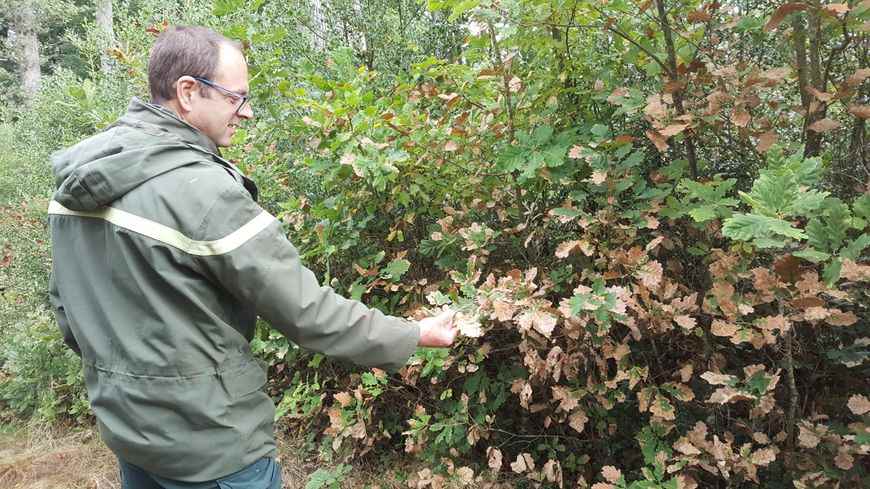This summer’s drought has also had an impact on our forests, and the rain of the past few days will not change anything. Leaves yellowed by the heat, dead trees and still dry soil… Some foresters in the north of Loire-Atlantique are worried.
When we approach the forest of Gâvre, near Blain, in the north of Loire-Atlantique, we see in the distance yellow leavesand it’s not because autumn is here, but because some plants have been burned by the summer sun.
Corentin Levesque, responsible for Loire-Atlantique and Maine-et-Loire at the ONF (National Forestry Office), points to a huge beech tree whose leaves have turned brown. “It’s like putting a tree in an oven, he explains. It literally burned when it was 40 degrees here.”
Beech and chestnut first victims of drought
Some tree species are more affected than others by high heat. “We know that beech, for example, needs more coolness and humidity than oak or pine, for example.” The forest health department also mentions the chestnut as a species particularly affected by the episode of drought that we experienced.
Phenomena that are increasing from year to year due to global warming. “I am concerned because these are things that were not noticed in previous years, and which confirm quite well the IPCC scenarios on the consequences of the climate on our forests.”
For the past few days it has been raining. What relativize the situation a little bit for the forester, even if a few drops will not save the dead trees. “This helps to slow down the risk of fire, but this is not what will fill the water tables, explains Corentin Levesque. It will take a lot of rain this winter to improve the general situation of the forest.”
Soon pine forests in Loire-Atlantique?
For the forester, the Loire-Atlantique forests could change their face as time passes and the planet warms up. “The only solution, in my opinion, is to change the species of trees, with, for example, species from around the Mediterranean, which genetically would be more suitable than our species from the north of France.” The pines are as it happens more resistant to high heat.
Corentin Levesque wanted to end the walk in the forest on a small optimistic note: “many trees have remained green. We hope that the forest can bravely resist the high heat in the years to come.”
It is difficult at this stage to establish a quantified assessment of the number of trees affected by the high summer heat. Each year, the ONF’s forest health department publishes its report on the state of French public forests, available on the ONF website.
Apart from the Gâvre forest, Mervent forest in Vendée was also a victim of the high heat. If the finding of drought is already visible on our hardwoods, the true consequences in terms of gasoline losses will be quantifiable next year.
